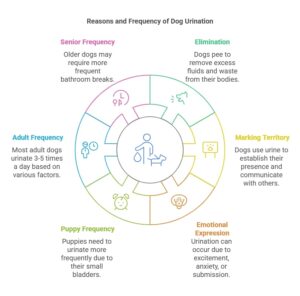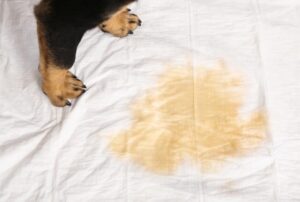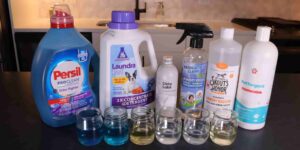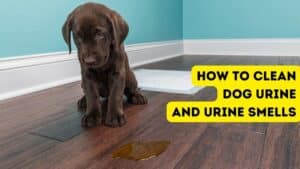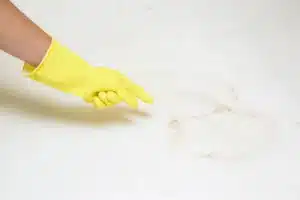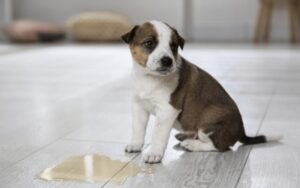Cleaning up after our furry friends is just part of being a pet parent. But when it comes to cat pee, it’s not just about the mess—it’s about the smell, the stain, and making sure your cat doesn’t return to the same spot. If you’ve ever wondered how to clean cat pee from the floor effectively, you’re in the right place! This guide will walk you through everything you need to know, step by step, in a friendly and reliable way.
Table of Contents
ToggleWhy Is Cat Pee So Hard to Clean?
Cat urine is notorious for its strong odor and stubborn stains. This is because it contains urea, uric acid, and other compounds that can linger if not cleaned properly. If left untreated, the smell can attract your cat back to the same spot, creating a cycle of repeat accidents. That’s why it’s crucial to clean cat pee thoroughly and use the right techniques.
Step-by-Step Guide to Cleaning Cat Pee from the Floor
1. Act Quickly
The sooner you address the accident, the easier it will be to clean. Fresh urine is much simpler to remove than dried stains.
2. Blot, Don’t Rub
Grab a few paper towels or a clean cloth and gently blot the area to soak up as much urine as possible. Avoid rubbing, as this can spread the stain and push it deeper into the floor.
3. Rinse with Water
Once you’ve blotted up the urine, rinse the area with cool water. This helps dilute the urine and remove any residual traces. Blot again to dry the spot.
4. Use an Enzymatic Cleaner
This is the secret weapon for cleaning cat pee! Enzymatic cleaners break down the proteins and acids in cat urine, eliminating both the stain and the odor. Spray the cleaner generously on the affected area and let it sit for the recommended time (usually 10-15 minutes). Avoid using ammonia-based cleaners, as they can smell like urine to your cat and encourage them to pee there again.
5. Deep Clean for Porous Floors
If your cat peed on a porous surface like wood or carpet, you may need to do a deeper clean. For carpets, consider using a carpet cleaner or steam cleaner. For hardwood floors, use a wood-safe cleaner after the enzymatic treatment to ensure no damage occurs.
6. Neutralize Odors
After cleaning, sprinkle baking soda over the area to absorb any lingering odors. Let it sit for a few hours or overnight, then vacuum or wipe it away.
7. Prevent Future Accidents
Once the area is clean, consider using a pet deterrent spray to discourage your cat from returning to the same spot. Also, make sure your cat’s litter box is clean and accessible to prevent future accidents.
FAQs About Cleaning Cat Pee
1. Can I use vinegar to clean cat pee?
Yes, vinegar can help neutralize the odor of cat pee. Mix equal parts white vinegar and water, spray it on the affected area, and let it sit for 10-15 minutes before blotting it up. However, vinegar alone won’t break down the uric acid, so it’s best used in combination with an enzymatic cleaner.
2. What if the cat pee has already dried?
Dried cat pee can be tougher to clean, but it’s not impossible. Start by rehydrating the stain with water, then follow the steps above. You may need to apply the enzymatic cleaner multiple times for stubborn stains.
3. Will bleach remove cat pee?
Bleach is not recommended for cleaning cat pee. While it may disinfect the area, it doesn’t break down the uric acid, and the smell can linger. Plus, bleach can react with the ammonia in cat urine, creating toxic fumes.
4. How do I clean cat pee from hardwood floors?
For hardwood floors, act quickly to prevent the urine from seeping into the wood. Blot up the urine, rinse with water, and use an enzymatic cleaner. Avoid using excessive water, as it can damage the wood. Finish by wiping the area with a wood-safe cleaner.
5. Why does my cat keep peeing outside the litter box?
There could be several reasons, including a dirty litter box, stress, medical issues, or territorial marking. If your cat is repeatedly peeing outside the litter box, consult your vet to rule out any health problems.
6. Can I use essential oils to mask the smell?
While essential oils can mask odors, they’re not a solution for cleaning cat pee. Some essential oils can also be toxic to cats, so it’s best to stick with pet-safe enzymatic cleaners.
7. How do I remove cat pee smell from concrete?
Concrete is porous, so cat pee can seep deep into the surface. Use an enzymatic cleaner and let it soak into the concrete. You may need to repeat the process several times to fully eliminate the odor.
Tips for Preventing Cat Pee Accidents
- Keep the Litter Box Clean: Scoop daily and change the litter regularly.
- Provide Multiple Litter Boxes: If you have more than one cat, provide one litter box per cat plus an extra.
- Address Stress: Changes in the household, like new pets or moving, can stress your cat and lead to accidents.
- Visit the Vet: If your cat is peeing outside the litter box frequently, it could be a sign of a urinary tract infection or other health issue.
Final Thoughts
Cleaning cat pee from the floor doesn’t have to be a nightmare. With the right tools and techniques, you can tackle the mess and odor effectively. Remember, the key is to act quickly, use an enzymatic cleaner, and take steps to prevent future accidents. Your floors (and your nose) will thank you!
If you have any more questions or tips about cleaning cat pee, feel free to share them in the comments below. Happy cleaning! 🐾




